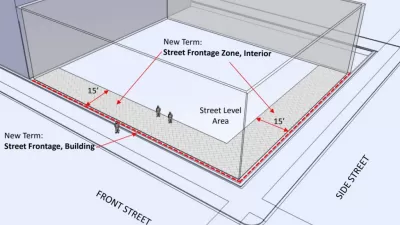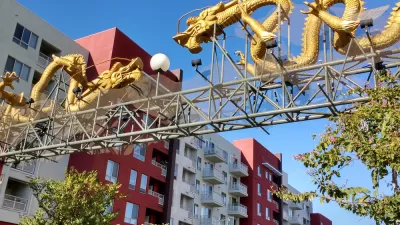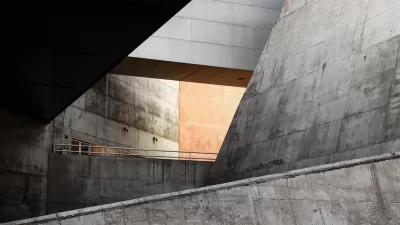The multifamily industry is building more in walkable locations, but developers still need instruction on the manners of placemaking. Here are some hints.
On Monday, I reported that many more multifamily units are being built on street grids, which offer important amenities to residents. Instead of density attached to a congested arterial road, urban apartments are connected to culture and walkable to shops, parks, and schools.
As the multifamily industry strides forward, challenges arise. Some developers have mastered the craft of building in an urban place and using active frontages. Others are merely plunking down buildings with little change in design from those that previously fronted parking lots.
Most communities still have conventional codes that are oblivious to the things that provide comfort to people on foot or bicycle — outside of their one-ton, four-wheel appendage. These elements include awnings and galleries, active building frontages, buildings that shape the public realm into an “outdoor room,” streetscape elements that provide enclosure and protection, and the screening of parking from the view of people on the street. Form-based codes, on the other hand, pay a lot of attention to these aspects of the public realm that improve livability.
FULL STORY: Making multifamily truly urban

Alabama: Trump Terminates Settlements for Black Communities Harmed By Raw Sewage
Trump deemed the landmark civil rights agreement “illegal DEI and environmental justice policy.”

Study: Maui’s Plan to Convert Vacation Rentals to Long-Term Housing Could Cause Nearly $1 Billion Economic Loss
The plan would reduce visitor accommodation by 25% resulting in 1,900 jobs lost.

Why Should We Subsidize Public Transportation?
Many public transit agencies face financial stress due to rising costs, declining fare revenue, and declining subsidies. Transit advocates must provide a strong business case for increasing public transit funding.

Wind Energy on the Rise Despite Federal Policy Reversal
The Trump administration is revoking federal support for renewable energy, but demand for new projects continues unabated.

Passengers Flock to Caltrain After Electrification
The new electric trains are running faster and more reliably, leading to strong ridership growth on the Bay Area rail system.

Texas Churches Rally Behind ‘Yes in God’s Back Yard’ Legislation
Religious leaders want the state to reduce zoning regulations to streamline leasing church-owned land to housing developers.
Urban Design for Planners 1: Software Tools
This six-course series explores essential urban design concepts using open source software and equips planners with the tools they need to participate fully in the urban design process.
Planning for Universal Design
Learn the tools for implementing Universal Design in planning regulations.
Caltrans
Smith Gee Studio
Institute for Housing and Urban Development Studies (IHS)
City of Grandview
Harvard GSD Executive Education
Toledo-Lucas County Plan Commissions
Salt Lake City
NYU Wagner Graduate School of Public Service





























